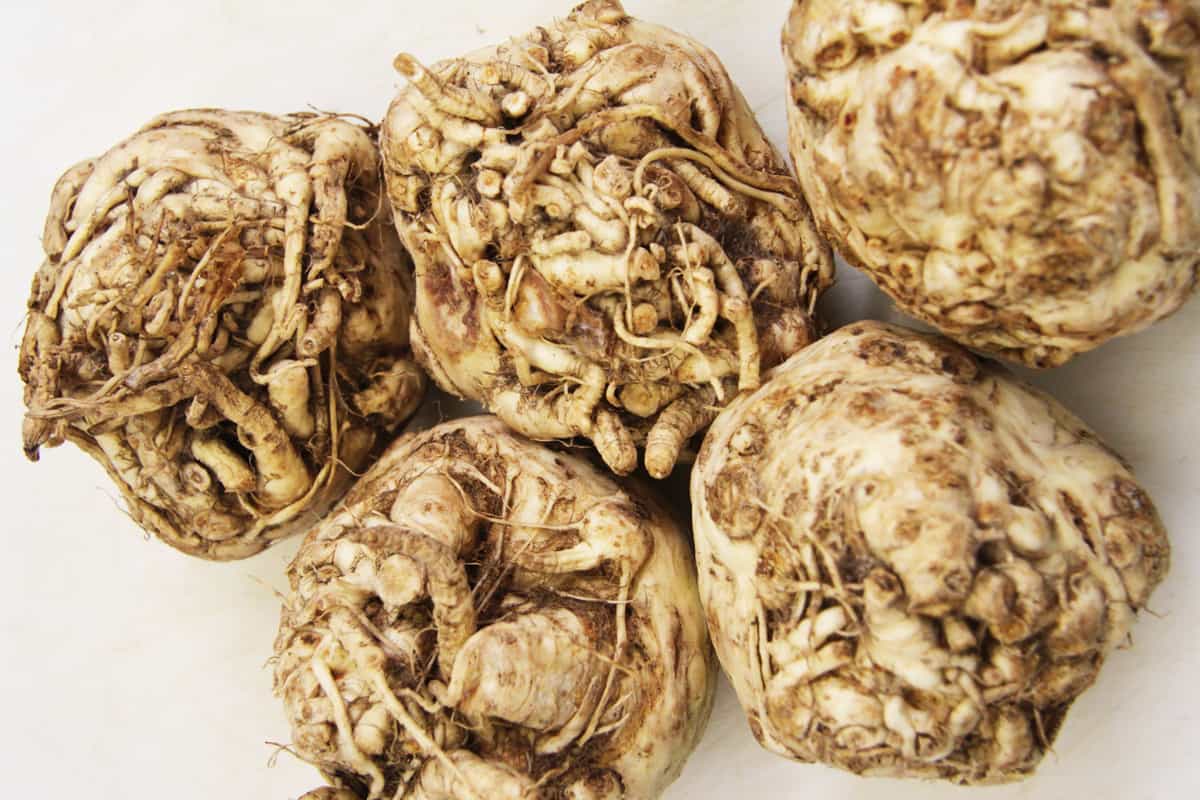This knobby, hairy, beige root vegetable doesn’t exactly scream, “Eat me!” but you know better than to judge a book by its cover.
This article originally appeared in our November 2015 print issue.
Celery root, also called celeriac, is like that weird-looking nerd you went to high school with: the one with the buck teeth who turned out to be a great beauty. Celery root is not the root of the celery plant (those tall, elegant green stalks are its cousin). Once you peel the skin off celeriac, you’ll find that the inside of this less-than-attractive root offers creamy-white flesh full of earthy, celery-like flavors with an undertone of parsley. It often seems to have a rich, nutty quality as well.
Speaking of peeling, your best way to get through the gnarly, uneven skin is to use a small, sharp knife; a serrated bread knife; or a wide vegetable peeler. Work your way around the root until all the skin is removed. Once peeled, the root is known to darken; to prevent this, soak peeled, cut celeriac briefly in water acidulated with a touch of lemon juice or white vinegar.
When shopping for celeriac (farmers’ markets are your best bet), choose roots that feel heavy in your hand and have no mush or soft flesh. A smooth root will be easier to peel, and if the root has green shoots growing on top, be sure they are fresh and bright green, not dried and wilted.
The texture of the flesh of celeriac is somewhat like a potato, and in fact, can be used as a substitute. Think mashed celery root, celery root gratin, celery root “fries,” grated celery root pancakes, or cream of celery root soup. It’s exceedingly versatile and can be eaten raw, steamed, mashed, roasted, or sautéed.
But the most famous moments of celeriac come in the classic French bistro dish céleri rémoulade, in which the root is grated or cut into very thin strips and tossed raw with (often homemade) mayonnaise, a touch of Dijon mustard, parsley, salt, and pepper.
Because it’s a root vegetable, celeriac keeps well for months, making for some great winter eating. Store it in a cool, dark spot—ideally a root cellar—or wrap it loosely in newspaper or plastic and store it in the refrigerator for several weeks.










